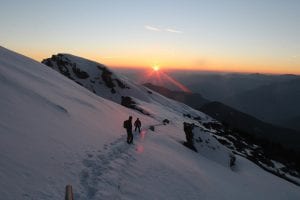
Welcome to Magpie Eco Tourism, your perfect getaway to the scenic beauty of Chopta, famously known as the Mini Switzerland of Uttarakhand. Surrounded by dense forests and snow-capped Himalayan peaks, Chopta is a paradise for nature lovers, trekkers, and spiritual travelers. Chopta trekking, which offers amazing paths through beautiful meadows and peaceful surroundings, is one of the region’s major tourist attractions. The region is home to the sacred Tungnath Temple, the highest Shiva shrine in the world, located at an altitude of around 3,680 meters (Tungnath height). From Tungnath, a short but breathtaking trek leads to Chandrashila, offering panoramic views of Nanda Devi, Trishul, and Chaukhamba peaks.
At Magpie Eco Tourism, we offer the best experience of camping in Chopta, combining comfort, hygiene, and a close connection with nature. Our eco-friendly camps are set amidst pine and rhododendron forests, perfect for bonfires, stargazing, and witnessing stunning sunrises. Whether you’re traveling solo, with friends, or in groups, our Chopta camping packages ensure an unforgettable stay in the heart of the Himalayas.
Visitors can also explore nearby mandirs such as Rudranath, Kalpeshwar, and Madhyamaheshwar, part of the famous Panch Kedar circuit. Plan your stay with Magpie Eco Tourism and experience the charm of Chopta, where adventure, spirituality, and natural beauty come together for a truly memorable Himalayan escape.

